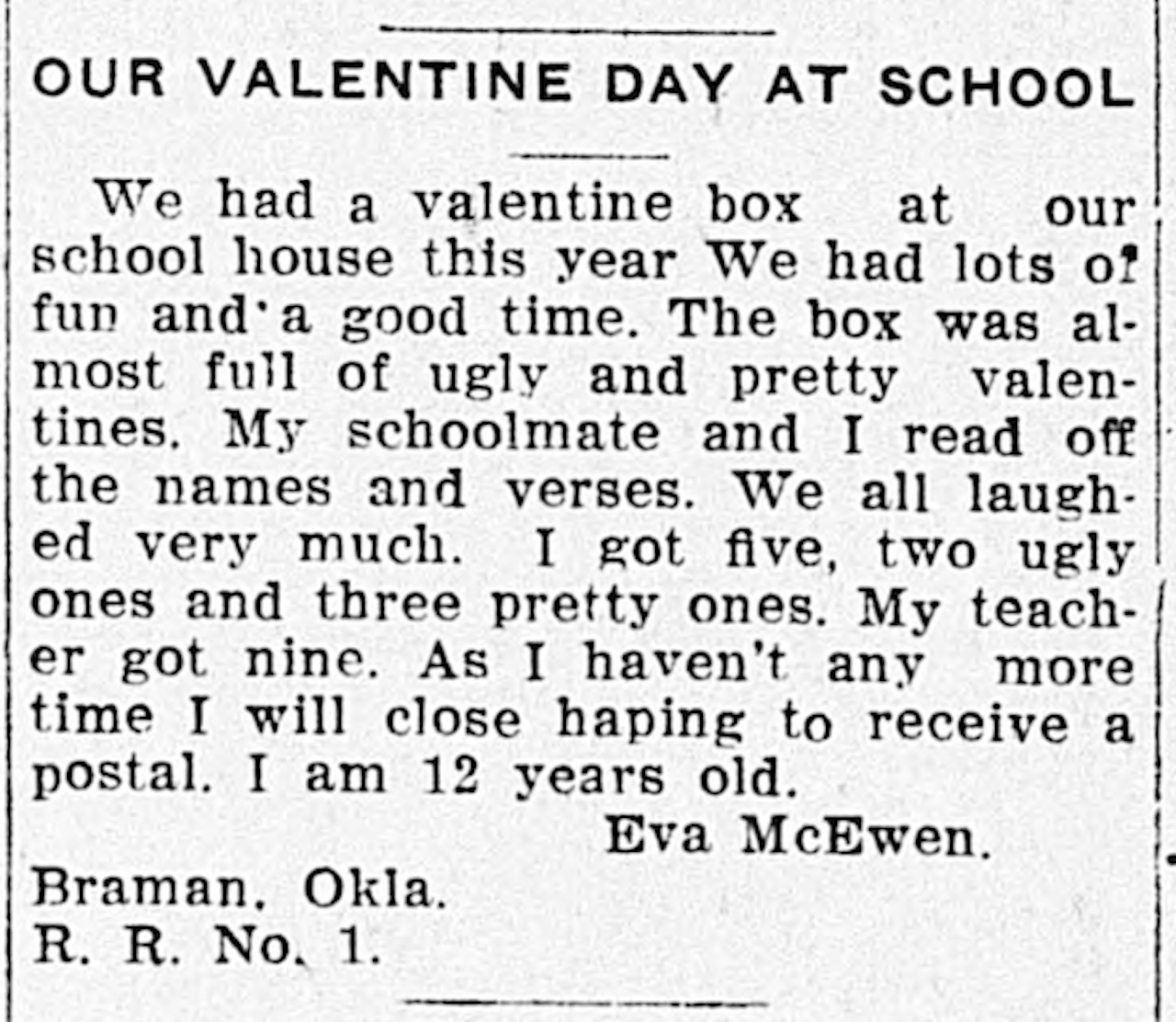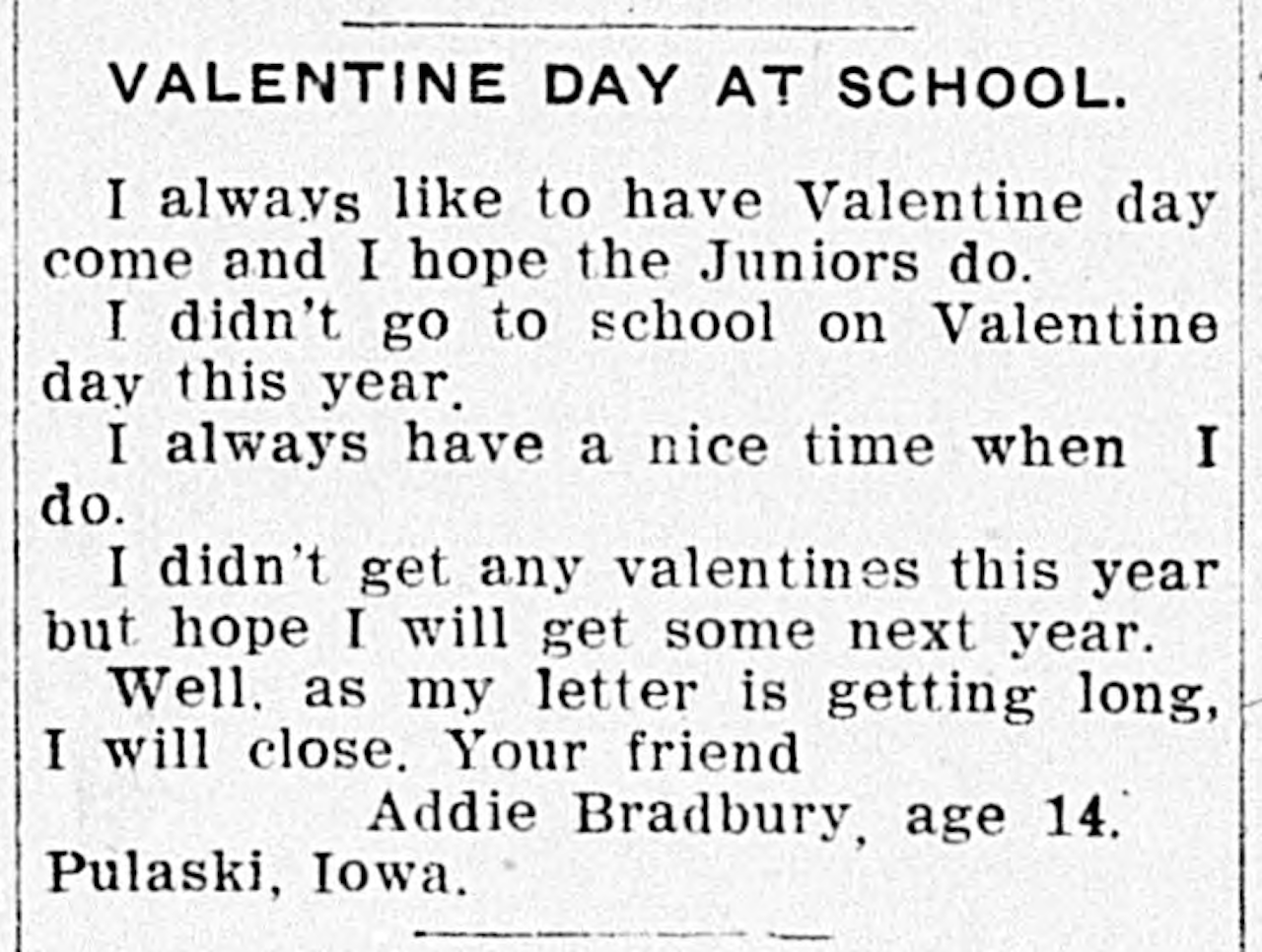As a romantically involved, sentimental adult, Valentine’s Day brings me a small amount of concern. I want to show my significant other I love them, but the success of our relationship doesn’t depend on the extravagance of this day. Overall, I spend a few hours — at most — getting ready for the most romantic of holidays, and once it passes there’s no lingering feeling of “What now?” like many people experience after Christmas or Thanksgiving. In the grand scheme of holidays, Valentine’s Day is as chill as the gift-giving holidays get.
That is, unless you’re a young kid in school, in which case it’s your — but mostly your mom or dad’s — responsibility to go to your local drug store, drop five bucks on a pack of paper valentines and candy for all 25 kids in your class, and spend the night before filling out the obligatory cards, so that you can give the same Frozen valentine to your bully and your crush. It’s not all so bad though. For that one day every year, you get to skip a boring class to play post office and eat candy. And though there’s no reason for this other than time-wasting tradition, this charade is a staple in American schools.
It’s understandable that the traditions we celebrate would trickle into our classrooms over time, but Valentine’s Day depends on school in ways that other holidays don’t. Imagine if every year school children took a day to prepare and eat a Thanksgiving dinner together or had to get every other kid in the class something for Christmas or their birthday. We wouldn’t do that because it would be an insane waste of time. But somehow, Valentine’s Day is ever-present, taking on a level of effort and significance that is not necessarily matched by its real world, adult observations. Only the craftiest, most thoughtful adults get valentines for everyone around them whether they like them or not — though admittedly I am guessing on this point since I have never met or heard of anyone who does that.
Oddly enough , for a holiday that celebrates romantic love it seems as much Valentine’s Day marketing is focused on exchanges between adults as it is between children who are classmates. The top links on Target’s Valentine’s Day page are for “classroom exchange cards,” “classroom exchange candy,” and “mailbox-making kits.” But the real question is how did this massive waste of class time ever come to be, anyway?
“It got really popular in the 1930s,” valentines collector and author Michele Karl told The Outline. “That's when they would start doing them in classrooms.” Antiques expert Terry Kovel concurred, telling The Outline that while children have always made valentines since the practice’s emergence in Victorian times, traditional school celebrations would come later, its popularity in the 30s resulting in the multipack paper valentines we know today.
“By the time I got to school in the late 40s, most schools said you have to give a valentine to everybody, you can't just give them to your best friends,” Kovel said. “They were selling them in the sets, and then you got to press them out. I have a box here which says 25 valentines for the children and one for the teacher, 25 cents for the box.” That opportunity to sell more valentines solved what became a classic Valentine’s Day trope. “What was happening was one kid would get 20 and one kid would get none, so they put an end to that.”
“Valentine’s Day as we know it today is about industrialization and the role of machinery.”
Selections from a 1908 Iowa newspaper, which printed several letters from school children describing their in-school Valentine’s Day celebrations, tells the tale of olden Valentine’s Day anxieties. “I got five, two ugly ones and three pretty ones. My teacher got nine,” reads one letter from a 12-year-old. “I didn’t get any valentines this year but I hope I will get some next year,” reads another from a 14-year-old.
In a piece from the same newspaper just a week earlier, one child’s letters to the editor notes, “There were quite a few valentines and it took about an hour to distribute them.”
It’s wild how little has changed in 110 years. What has changed, though, are the valentines themselves. “Lots of times with the little kids valentines, they'll be doing different things like playing or washing clothes or playing football,” said Karl. And while generic valentines for kids are still widely available, shelves are also stocked with valentines featuring licensed designs of everything from Mickey Mouse to Minions to Star Wars options complete with lightsaber-like glow sticks. Even that has its origins in early 1900s, according to Kovel, as valentines with licensed images of Yellow Kid, a popular comic in the late 1800s, were marketed and sold.
Valentine’s Day’s popularity with children was equally helped along by candy manufacturers who were eager to market to working class youth with disposable income, according to candy and sugar historian Susan Benjamin. “Valentine's Day as we know it today is about industrialization and the role of machinery which kind of blended together with marketing to create candies,” said Benjamin. “For the first time [in the mid-1800s] the marketing went to kids. But more to the point it went to working class kids, because now they could enter the middle class. They could go buy something.” School valentines combined with candy for exchange wouldn’t come until later. “They started in the ’50s when trick or treating really took off. Candies stopped being something you went out and bought and had a great time with, but something that actually entered your life as a ritual.”
Debates over Valentine’s Day and its place in schools have also evolved over time. When school celebrations first began, they were seen by some as the holiday’s ticket into the future. In a 1930 New York Times article, writer Henrietta S. Ripperger met the questionable endurance of Valentine’s Day with two frank assurances of its survival.
Will the valentine survive? The usages of Mayday, a festival of about the same relative value in the calendar, have almost died out. But St. Valentine’s Day customs are kept alive here by at least two influences… Incorporating the valentine into the work of the school assures a certain permanence to the utterly useless and engaging bit of nonsense [of making valentines.] And its position as a money-maker makes its position even more secure. Its future is in the hands of people who know not only how to meet a demand, but how to create it!
Fifty-one years later, the paper would publish political columnist William Safire’s lament that Valentine’s Day, with its “sales appeal” for “pushing flowers and candy and jewelry,” had overshadowed observations of Lincoln’s birthday. He proposed moving it to early fall; of course, that didn’t happen. Probably to his chagrin, its popularity as a commercial holiday has only expanded. The National Retail Federation expects U.S. adults to spend $19.6 billion this year alone, up $1.4 billion from last year.
Today, debates over Valentine’s Day’s place in schools rage in online parenting circles. Some argue that the practice of each kid giving each other kid a valentine cheapens the holiday, and unhealthily coddles children. Others ask why we celebrate Valentine’s Day in elementary schools, anyway, considering they’re a needless cost for parents, and not to mention flagrantly wasteful. And there are still those others who insist Valentine’s Day is just a fun kids tradition that preserves the experience of getting a physical note or teaches tolerance or whatever.
More and more school districts are doing away with the celebration all together. Schools in Minnesota and Florida are among those to have banned in-school celebrations of the holiday. Others, such as one school in Oregon, are looking for ways to make celebrations more inclusive and somehow educational. What began as a marketing grab for kids money has become an institution to be argued over — and if that isn’t America, what is? But considering how much of my time in school was wasted learning things like how to use a card catalog or the rhythm method, maybe a candy potluck isn’t such a bad tradition.



